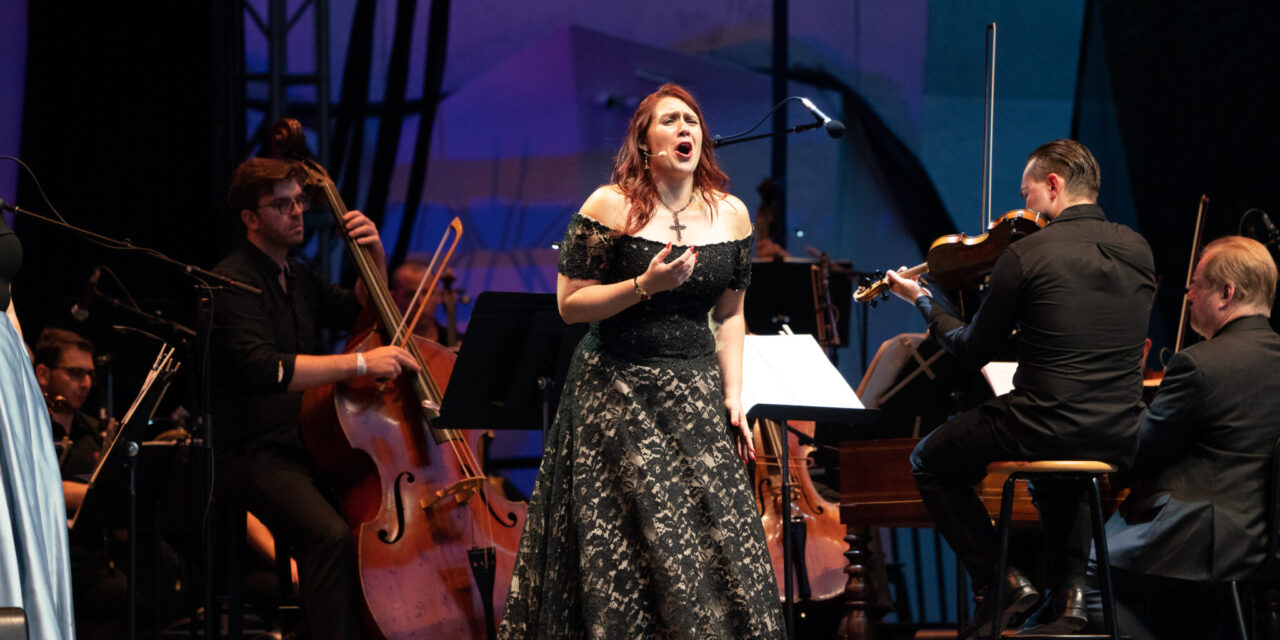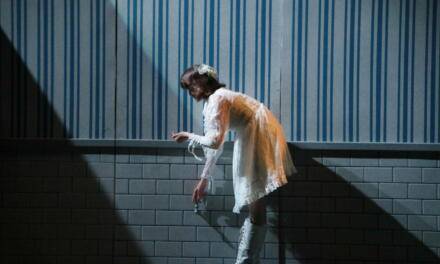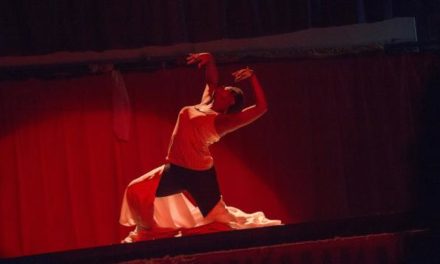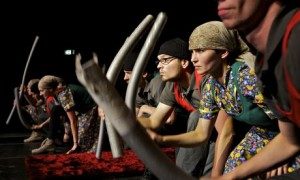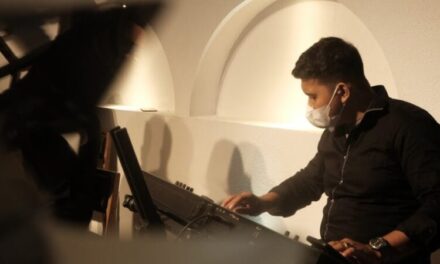The production of The Barber of Seville by Teatro Nuovo overcame the restrictions of the covid-era to deliver New York City audiences with a refreshing and compelling performance of the most popular comic opera in history.
Teatro Nuovo’s orchestra was led by its concertmaster along with a handy harpsichordist by his side. This choice of orchestral setup, which omitted the role of the conductor, created a sense of closeness between the actors and instrumentalists. Indeed in the Baroque period, before the invention of the conductors, harpsichordists (who were usually also the composer) would lead the orchestra, establishing the harmonic structure and ensuring the rhythmic steadiness by nodding their heads. As music became more harmonically complex, and harpsichordists had to focus exclusively on their playing, conducting duties fell to the first violinist. This style of orchestral leading, split between the harpsichordists and the violinist, was soon abandoned due to an inherent clash in leadership. Apparently, creating competition between the two biggest egos in classical music (violinists and composers) was not a recipe for success. But for our purposes, that managerial drama perfectly reinforced the drama of Rossini.
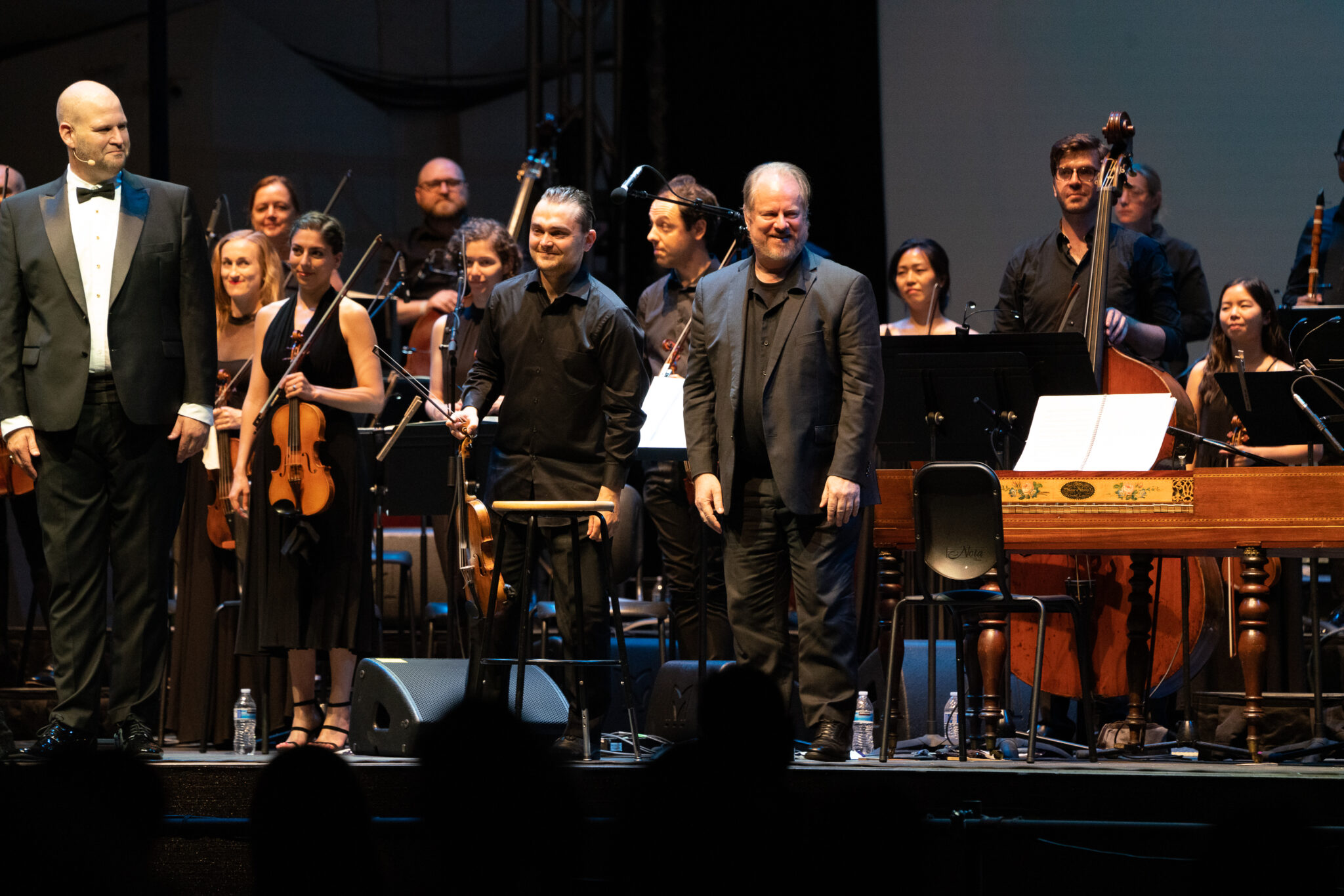
Nicholas Simpson (Almaviva), Jakob Lehmann (Primo violino e capo d’orchestra), and Will Crutchfield (Maestro al cembalo).
As the orchestra began its bright overture on the cloudy Wednesday evening of July 28, a story of a love triangle unfolded onstage. The first two members of this triangle are Rosina, a young aristocratic orphan, and Doctor Bartolo, her legal guardian. Doctor Bartolo wants to marry Rosina without delay so as to have access to her inheritance. He recruits the help of Don Basilio, a music teacher with crooked tendencies, to hurry along the process of the marriage contract. However, Doctor Bartolo’s plans are complicated by the third member of the triangle, Count Almaviva. He arrives in town and is immediately love-struck by Rosina. He enlists the help of Figaro, a mischievous barber, to win Rosina’s heart. They must woo her while avoiding the ever-present gaze of Doctor Bartolo, and so the Count and Figaro hatch a plan involving multiple disguises.
As this story progressed, the outdoor environment became a unique element of the musical score. Honking cars contributed to the roar of the brass section and police sirens accompanied the shriek of the strings. It wasn’t clear if we are in New York City, Seville, or some place in between. These city sights and sounds that leaked into the music added a sense of realness to the opera that will be missed as pre-covid normalcy returns and audiences venture back into the relative isolation of the concert hall.
A number of scenes stood out for featuring exceptional musicianship and acting. Figaro, played by Hans Tashjian, sang his playful aria about the wonder and prosperity in the life of a quality barber with gusto and vocal swagger that modern-day barbers could only dream of matching. He pranced around the stage as if it was his home turf of Seville while singing about the pleasure of unlimited clientele. Later, Count Almaviva, played by Nicholas Simpson, schemed with Figaro to ferry Rosina away from the grips of Doctor Bartolo. Their glee was evident in the wave-like dynamics of the duet where their vocal lines rapidly swelled and faded in volume. This display of vocal agility captured the characters’ feelings of frenzied excitement, and they kept at it, over-inflating the brilliance of their scheme until they reached a climax where Figaro declared “oh how cash breeds creativity” and “we can’t go wrong!” I wouldn’t be too sure.
The Count also exemplified the contemporary wardrobe choices made by Teatro Nuovo that complemented the acting style of the actors. The small differences in the Count Almaviva’s clothing, coupled with his acting choices as he entered into various disguises to woo Rosina and escape the clutches of Doctor Bartolo, was ingenious. In one scene, his partially untucked white shirt and slightly slurred speech conveyed that he was entering the disguise of a drunk. There was a real elegance in these simple wardrobe choices.
Another well-executed scene was Rosina’s “Una voce poco fa” cavatina about her desire for Lindoro (the disguise of Count Almaviva) and the wounds of her past relationships. In this cavatina, Rosina, who was played by the red-haired mezzo-soprano Hannah Ludwig, promises to bare her fangs at any man who would attempt to penetrate her armor, proclaiming that “I will be the snake, not the charmer.” But rather than communicating this message as a bitter and vindictive teenager, Ludwig’s thick, luscious vocal color and no-nonsense black dress conveyed a mature and gutsy message of strength and personal accountability. Ludwig’s portrayal of Rosina (as well as the aforementioned minimalist wardrobe) moved the entire opera away from its traditional comic vibe, and anchored it in more serious and down-to-earth territory.
Despite this unique tone, there were some surprisingly comic scenes, including the intimate moment between Rosina and the disguised Count Almaviva (made possible by a delightful display of stage blocking). On stage left was the Count and Rosina in a warm embrace whispering phrases of affection, while on stage right was the pompous Doctor Bartolo, leaning backward and receiving a shave while barking orders to his maid Berta. It was a great visual juxtaposition between true love and an opportunistically-driven love. The pompous disposition of Doctor Bartolo as opposed to the caring disposition of the Count was further reinforced by the precise typecasting of the actors. Doctor Bartolo, played by Scott Purcell, was of a short stature, scrunched-up face, and brassy tone while the Count was tall and sang with a silvery tone.
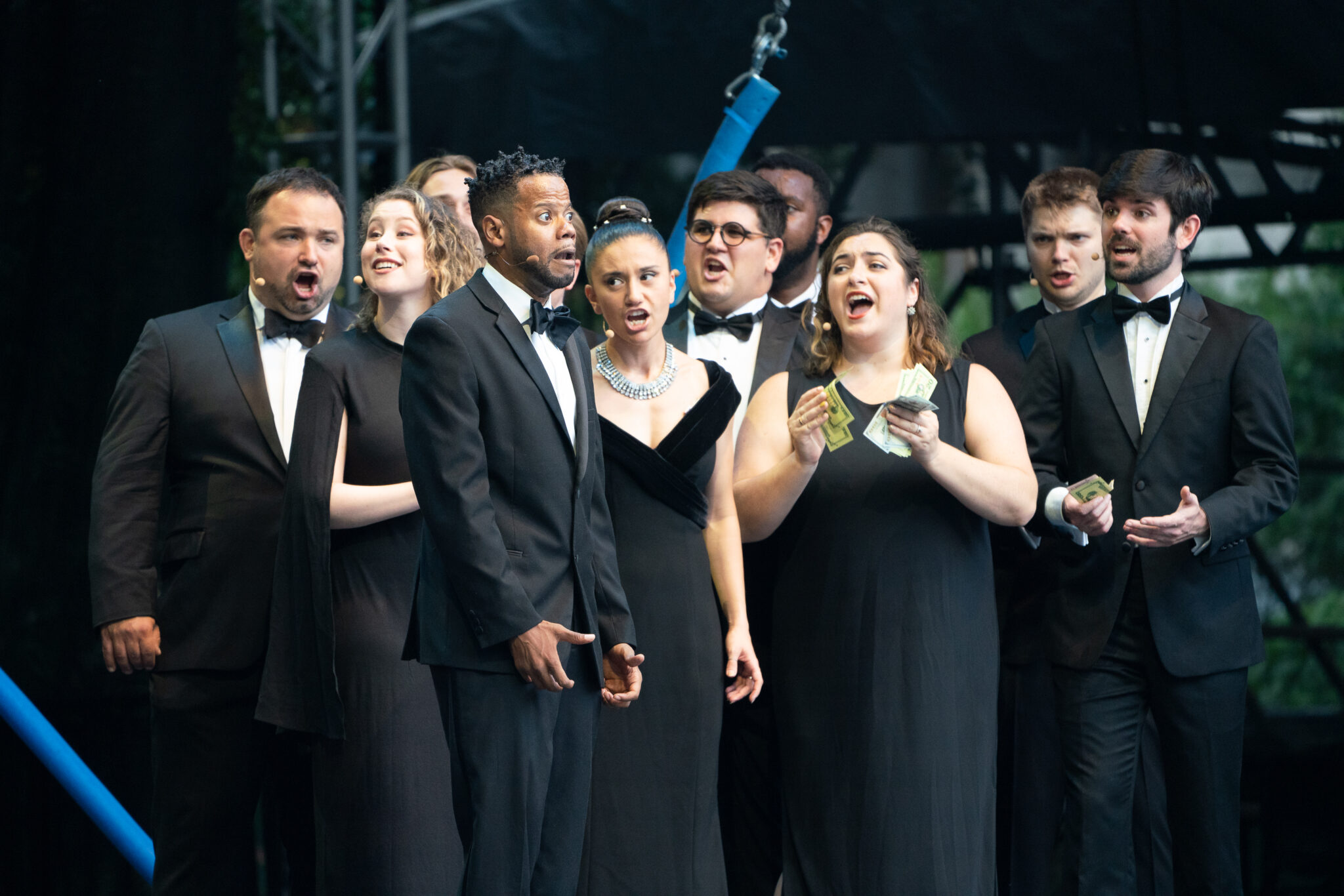
Kyle Olliver (Fiorello) with the Teatro Nuovo chorus.
The playing of the orchestra was technically impeccable and musically cohesive. Unfortunately, if you were seated beyond the first 10 rows, it was difficult to fully appreciate the beauty of Rossini due to the pitfalls of outdoor amplification. Outdoor acoustics are a tricky business, and if a minimalistic approach to amplification is taken, then one runs the risk of diluting the intensity of the musical experience. The production team could have set up more speakers along the rows of chairs to ensure that the music would not get lost to the wind. Additionally, the subtitles that were displayed on a large screen behind the orchestra flowed well with the singing, however, it would have been preferable to begin the show at a later time, when the subtitles would be more visible. Also, as the evening progressed, the effect of the stage lighting became more apparent. The lighting really set the right tone in the second act, particularly during the scene in which the disguised Count Almaviva finally revealed his true identity to his beloved Rosina, and the stage flooded with blue lighting to create the mood of tender emotions under moonlight.
In the venue, Damrosch Park at Lincoln Center, there was an atmosphere of anticipation, as for most audience members, this was probably the first live concert they had seen in a year. The most obvious change was the implementation of socially distanced “pods” in which the audience sat. These pods provided a more intimate setting than the traditional seating arrangement, and were therefore fitting for an opera revolving around themes of love and romance.
Teatro Nuovo’s rendition of The Barber of Seville was not an over-the-top melodrama, as it is often performed. Rather, its combination of powerful cast performances, distinctive musical choices, and a minimalist wardrobe delivered a serious performance that felt relevant and true to the sentiments of our covid-era.
This post was written by the author in their personal capacity.The opinions expressed in this article are the author’s own and do not reflect the view of The Theatre Times, their staff or collaborators.
This post was written by Dvir Avnon-Klein.
The views expressed here belong to the author and do not necessarily reflect our views and opinions.

